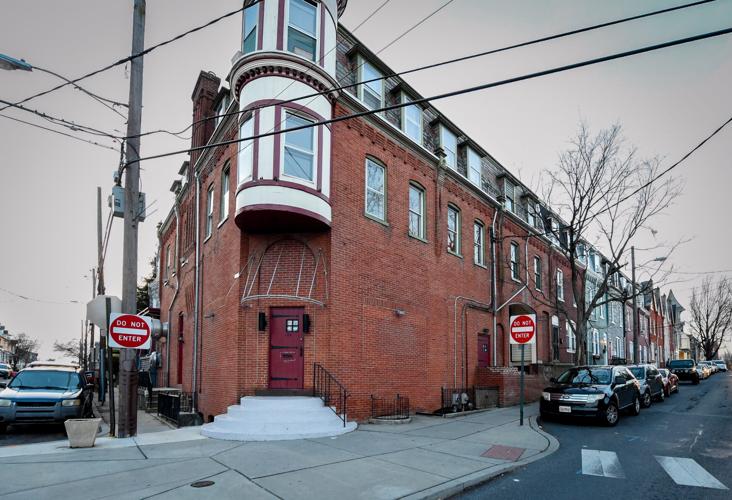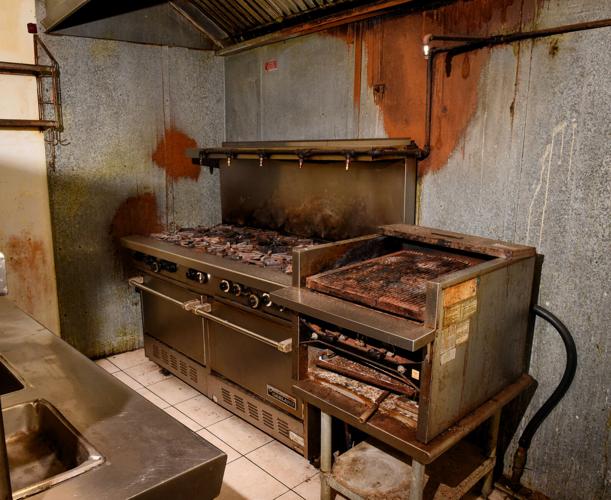After more than a decade of dormancy and slow neglect, Lancaster city officials and neighbors hope today begins the revitalization of a landmark property in the city’s Cabbage Hill neighborhood.
Proposals are due by 5 p.m. for the redevelopment of the former Strawberry Hill Restaurant & Bistro and adjoining properties, a deadline city officials hope will begin to restore life to the historic Victorian building atop the hill at the five-point intersection of West Vine, West Mulberry and West Strawberry streets.
“The former Strawberry Hill Bistro properties anchor a prominent intersection within Lancaster’s Cabbage Hill neighborhood,” said Thomas Gilbertson, a senior planner in the city’s planning department. “The revitalization of this property will not only breathe new life into the immediate property and intersection but will help to catalyze improvements throughout the area.”
The redevelopment of the Strawberry Hill properties would be a big boost for part of the city that has been seeing fruits of a concerted neighborhood improvement effort. Yet, the condition of the property, the limitation on possible uses, and the realities of the tight parking in the area’s narrow streets could be headwinds for any would-be developer.
“The building has been mostly unoccupied for several years and will likely require significant investment and reconfiguration,” the request for proposals reads.
A review of any proposals received will be completed by Jan. 26, and the city Land Bank Authority, which now owns the properties, will make a final decision on a sale after interviewing respondents at one of its monthly public meetings.
“Proposals will be evaluated with primary consideration given to their ability to supply affordable housing units; however, they will also be reviewed for their potential community benefit, creativity, historic preservation efforts and the developer’s proven capacity,” Gilbertson said.
Remaking a destination
When Strawberry Hill closed in 2012 because of what were then described as owner Dennis Kerek’s health problems, it was only meant to be a temporary hiatus. But that temporary closure became permanent, idling what since its opening in 1986 had been a destination restaurant that featured fine dining, an extensive wine list and live jazz.
As Strawberry Hill’s wood-walled barroom and brick-lined dining room sat quiet and unused, the surrounding neighborhood of mostly two-and three-story row homes was seeing a resurgence. SoWe, a resident-led neighborhood group that formed in 2016, has helped spur improvements in the southwest section of the city, which includes the historic Cabbage Hill neighborhood.
“Our block has a lot of new, young homeowners in it right now. We’re prospering. We’re doing very well here,” said Dick Hecker, a lifelong resident of the 400 block of West Vine Street and a SoWe board member.
While Hecker said the former Strawberry Hill restaurant still looks pretty good from the outside, its long-term vacancy is not good for the neighborhood.
“We’re welcome to having that place redone. It’s not an eyesore but it’s neglected and needs something done with it,” he said.
Last spring, the city’s Land Bank Authority paid $400,000 to buy the three properties from the Kerek family. The public authority seeks to deter the spread of blight and promote the redevelopment and reuse of vacant and abandoned properties.
These are three properties that were purchased and are now being offered for sale by the Land Bank Authority: 122 and 128 W. Strawberry St., as well as 401 W. Vine St., all of which are interconnected. Together, there’s roughly 8,600 square feet of space.
“There is quite a lot of room contained within the three unified properties, and we’re excited to see the ideas developers propose,” Gilbertson said.
At 128 W. Strawberry St., the restaurant’s corner entrance leads into the barroom through a huge doorway shaped like a barrel. The door still opens from the inside with a spigot that doubles as a door handle. An out-of-tune piano sits in front of the former stage and the brick fireplace that opens to the main dining room at 122 W. Strawberry St. Some small worn tables, but no chairs, are scattered around the dining room, which could only be dimly lit on a recent tour.
Above the barroom is the restaurant’s former event space, where a corner alcove offers a view of downtown Lancaster. The second and third floors above the restaurant have space for at least two apartments although some rooms have crumbling walls, water stains and other signs of neglect. Another apartment above the former beer carryout at 401 W. Vine St. also shows significant signs of wear.
The properties are in an R3 residential zone that limits the size of commercial uses and would prohibit the opening of a brewery or brewpub, for example. A café or small retail store the size of the former Strawberry Hill Restaurant would be allowed by special exception, which requires a review by the city’s zoning hearing board.
A look at the former Strawberry Hill Restaurant
Parking problems
Even before Strawberry Hill, the corner building had been a longtime neighborhood gathering spot and eatery. A one-time hotel, the circa-1840 building was the home of Obie Miller’s Steak House from 1944 until 1978. The restaurant closed at its longtime spot because it moved to 1679 Lincoln Highway East in East Lampeter Township, the current home of Lancaster Brassiere.
In announcing the decision to move out of Cabbage Hill, owner Nevin Miller – Obie’s son – cited the lack of parking in the area as well as the city’s decision to make Strawberry and Mulberry streets one-way streets, according to news reports at the time. Most of Mulberry Street was returned to two-way in 2016, although the block that ends at Strawberry Street remains one way.
The 74-year-old Hecker, who has lived in the same house on West Vine Street all his life, says parking in the neighborhood is a problem that has become worse in recent years. Many streets are so narrow that parking is only possible on one side of the street, making residents like himself leery about a business at the corner that would attract customers looking for what are becoming increasingly scarce spots.
“Apartments or some kind of low-cost housing or something to help the population would be fine,” Hecker said. “I’m just a little leery about a storefront and the parking issues.”













 CHAD UMBLE | Staff Writer
CHAD UMBLE | Staff Writer









